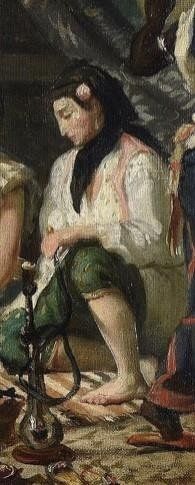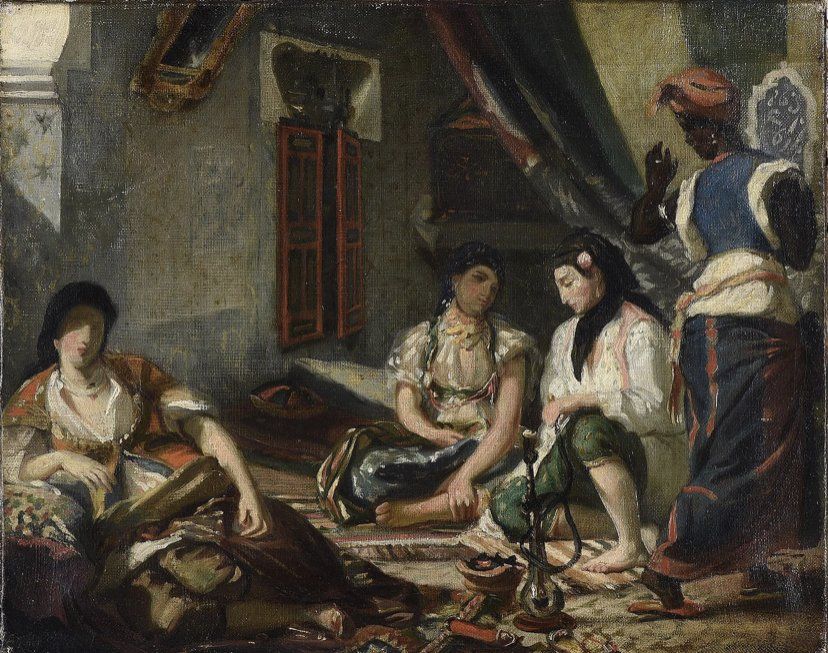
Adolphe William BOUGUEREAU. 1825-1905. Painter.
Women of Algiers in their apartment after Delacroix.
About 1846-1850.
Oil on canvas 33 x 41 cm
Originally from La Rochelle where he completed an apprenticeship at the Ecole des Beaux-arts in Bordeaux, Adolphe William Bouguereau joined Picot's workshop in Paris in 1846, a center of academic teaching. In 1850, winner of the Prix de Rome for his work Zenobia found by shepherds on the banks of the Araxes, he went to Italy where he completed his training and observed Italian painters. This initiatory journey of academic painters seems to lead him to the representation of historical and religious subjects. On his return to France, his compositions stood out and were the subject of acquisitions by the State and by foreign collectors. From 1866, he was represented by the art dealer Paul Durand-Ruel, which considerably increased his notoriety among American collectors. To this fame is added the rewards, in 1876 he became a member of the Academy of Fine Arts, he received numerous medals during exhibitions and was decorated with the Legion of Honor. While regularly exhibiting at the Salon, he teaches at the Académie des Beaux-arts in Paris as well as at the Académie Julian. An academic painter par excellence, he was asked to carry out public commissions, notably for the decoration of the ceiling of the Grand Théâtre de Bordeaux, but also in Paris where he created decorative sets for the Sainte-Clothilde and Saint-Augustin churches.
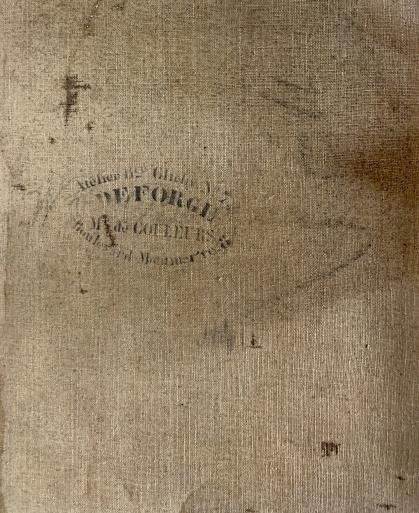
Signature and stamp on the back of the canvas Adolphe William BOUGUEREAU 1825-1905.
Women of Algiers in their apartment after Delacroix. Circa 1846-1850.
Oil on canvas 33 x 41 cm
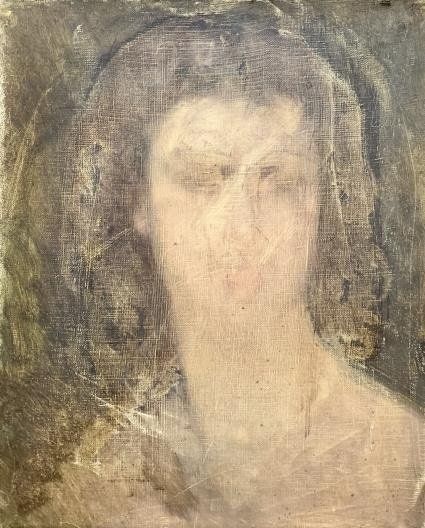
Sketch erased
Adolphe William BOUGUEREAU 1825-1905.
Women of Algiers in their apartment after Delacroix. Circa 1846-1850.
Oil on canvas 33 x 41 cm
Private collection
This painting is part of William Bouguereau's early works and demonstrates the learning methods of the time, notably consisting of copying his predecessors. The stamp of the color merchant Deforge on the back of the painting allows us to date the work between 1840 and 1856 and the signature characterized by a typology of the beginning of his career allows us to think that the work is located between his entry into the Picot's workshop in 1846 and his departure for Rome in 1850. An erased sketch for another work whose frame served as a support for our painting was found, this has since been removed. It is interesting to note that Bouguereau was inspired by Delacroix, even though art historians have subsequently often highlighted the dissimilarities between these two artists.
Delacroix painted his famous painting Women of Algiers in their apartment in 1834, following a trip he made to Morocco and Algeria. It was there, in Algiers, that a Turkish corsair authorized him to visit his harem. From this vision he draws his inspiration for this masterpiece of orientalism which enriches the aesthetic repertoire of the second half of the 19th century with new motifs.
The Orient, the object of all fantasies since the 17th century, is therefore an obligatory passage for artists in the same way as the representation of mythological or religious subjects. For Victor Hugo the Orient becomes, “for intelligences as much as for imaginations, a sort of general concern” (Victor Hugo, preface to Les Orientales, 1829). Théophile Gautier underlines the importance of this theme and this pictorial atmosphere for future generations of artists by writing “The trip to Algiers becomes for painters, as essential as the pilgrimage to Italy: they will learn about the sun , study the light, look for original types, mores and primitive and biblical attitudes.” To the great masters of the Renaissance and classicism are now added the copies of orientalist painters. A major work in the history of French art, Women of Algiers in their apartment will be a source of inspiration for an entire generation, after the death of Delacroix, and following the transfer of the painting from Luxembourg to the Louvre, Henri Fantin-Latour, the author of Hommage à Delacroix, will make a copy. A painter of women, it seems only natural that William Bouguereau wanted to practice representing this scene of female intimacy, the keystone of one of the most popular artistic movements of his time. As public collections reveal, many artists will practice copying this iconic work, which will continue to inspire painters.
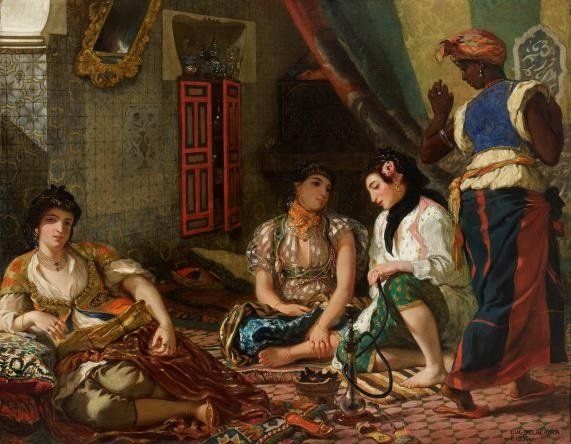
Eugène Delacroix,
Women of Algiers in their apartment, 1834
Oil on canvas, 180 x 229 cm,
Louvre Museum
Photo (C) RMN-Grand Palais
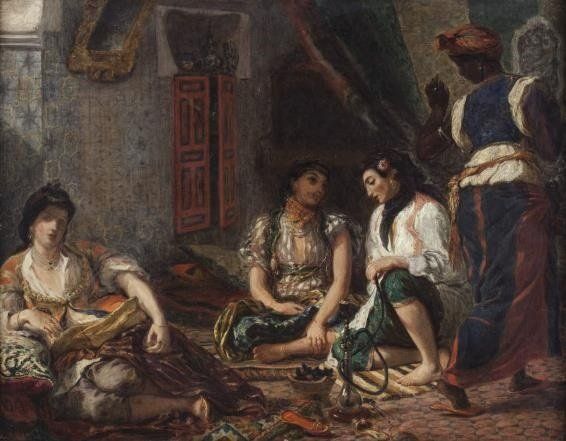
Henri Fantin-Latour,
Women of Algiers in their apartment after Delacroix
1876
Oil on canvas, 73.9 x 93.8 cm
Eugene Delacroix Museum
Photo (C) RMN-Grand Palais
Related works in public and private collections
- Eugène Delacroix, Women of Algiers in their apartment. 1834. Oil on canvas, 180 x 229 cm, Louvre museum
- Henri Fantin-Latour, Women of Algiers in their apartment after Delacroix. 1876. Oil on canvas, 73.9 x 93.8 cm, Musée Eugène Delacroix
- Georges Jouve, Algerian scene, women of Algiers (after Eugène Delacroix). Before 1897. Oil on canvas, 177 x 228 cm, Saint-Brieuc, Museum of Art and History
- Maurice Leclercq, Women of Algiers (after Eugène Delacroix). 1895. Oil on canvas, 197 x 242 cm, Musée de la Lunette
- Pablo Picasso, Women of Algiers (version O). 1955. Oil on canvas, Private collection
